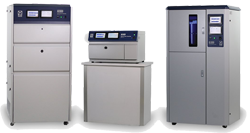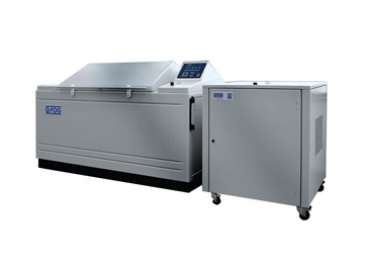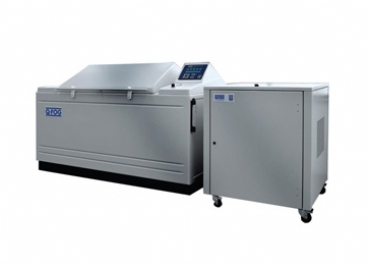耐候性試驗
Weathering Testing
咨詢熱線
18566398802ISO 4611-2010
ISO 4611-2010標(biāo)準(zhǔn)介紹
ISO 4611-2010標(biāo)準(zhǔn)簡介
0.1 Various test methods are available for the exposure of plastics to different aggressive agents acting in a combined and simultaneous fashion, such as natural weathering. Other test methods are available for the purpose of a separate evaluation of the action of individual aggressive agents. Among the latter there are, for example, tests for the resistance to specific chemicals and to radiations of a definite spectral range.
For some applications, it may be desirable to evaluate the behaviour of the materials in a hot damp atmosphere just below the saturation limit of water vapour, as well as in the presence of the liquid phase.
In these conditions not only water absorption or leaching of some ingredients of the composition may be observed but also degradation phenomena due to hydrolysis, exudation of plasticizers, etc.
It may also be desirable sometimes to evaluate the behaviour of materials in the presence of a highly corrosive electrolyte, such as a sodium chloride solution (salt mist), which is the principal aggressive agent present in marine environments and of particular importance in the case of nautical applications. It is well known that sodium chloride has no noticeable action on the polymers that are the basic components of plastics, and that salt solutions, owing to their higher osmotic pressure, are normally absorbed by plastics to a lesser degree than pure water, but it cannot be assumed a priori that they have no action on composite materials, containing fillers, reinforcing components or pigments, for instance.
Furthermore, the evaluation of the effect of salt mist can be very important for finished or semi-finished articles which, while basically consisting of plastic materials, do contain some metallic elements, such as moulded-in inserts, thin laminated foils, surface coatings applied by electro-plating or other procedures, or, lastly, metal cores sheathed with plastics by extrusion or by dipping in pastes or fluidized-bed powders.
0.2 Methods and equipment for obtaining reproducible aggressive environments of the above types are well known and have been described by International Standards relevant to other materials and IEC (International Electrotechnical Commission) standards relevant to electrical and electronic components. The same equipment and procedures described in these standards can also be employed for plastics, with appropriate care and adjustments.
0.3 The present International Standard is intended to provide general guidance only, on the choice of suitable equipment and procedures for obtaining the exposure conditions described above and for the preparation of test specimens. It also only gives general guidance on the properties to be evaluated. Specific details are given in the various ISO and IEC publications.
For the expression of results, the present International Standard follows, as far as possible, the same criteria adopted in the existing test methods for the exposure to chemicals (see ISO 175) and to natural weathering or artificial light (see ISO 4582).
0.4 These tests are intended to yield data about the effects of the described exposures on the materials; however, a direct correlation between the experimental results and the behaviour in service is not to be inferred.
1 Scope
1.1 This International Standard specifies the conditions of exposure of plastics to
— damp heat,
— water spray,
— salt mist,
and the methods for the evaluation of the change in some significant characteristics after given exposure stages.
1.2 This International Standard is, in general, suitable for all plastics in the form of standard test specimens, and finished articles or parts thereof.
1.3 This International Standard considers separately methods for the determination of
— change in mass,
— change in dimensions and appearance,
— change in physical properties.
2 Normative references
The following referenced documents are indispensable for the application of this document. For dated references, only the edition cited applies. For undated references, the latest edition of the referenced document (including any amendments) applies.
ISO 62, Plastics — Determination of water absorption
溫馨提醒:本ISO 4611-2010可能存在更新的版本,建議尋找ISO 4611-2010的發(fā)行商確認(rèn)。


 鹽霧試驗箱
鹽霧試驗箱
 粵公網(wǎng)安備 44060402000067號
粵公網(wǎng)安備 44060402000067號